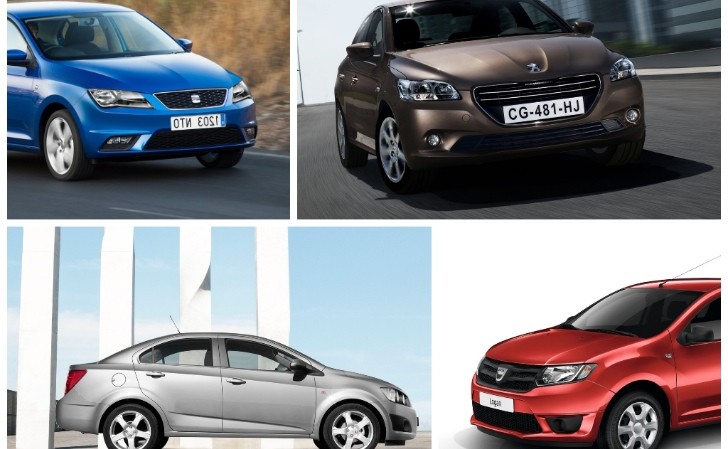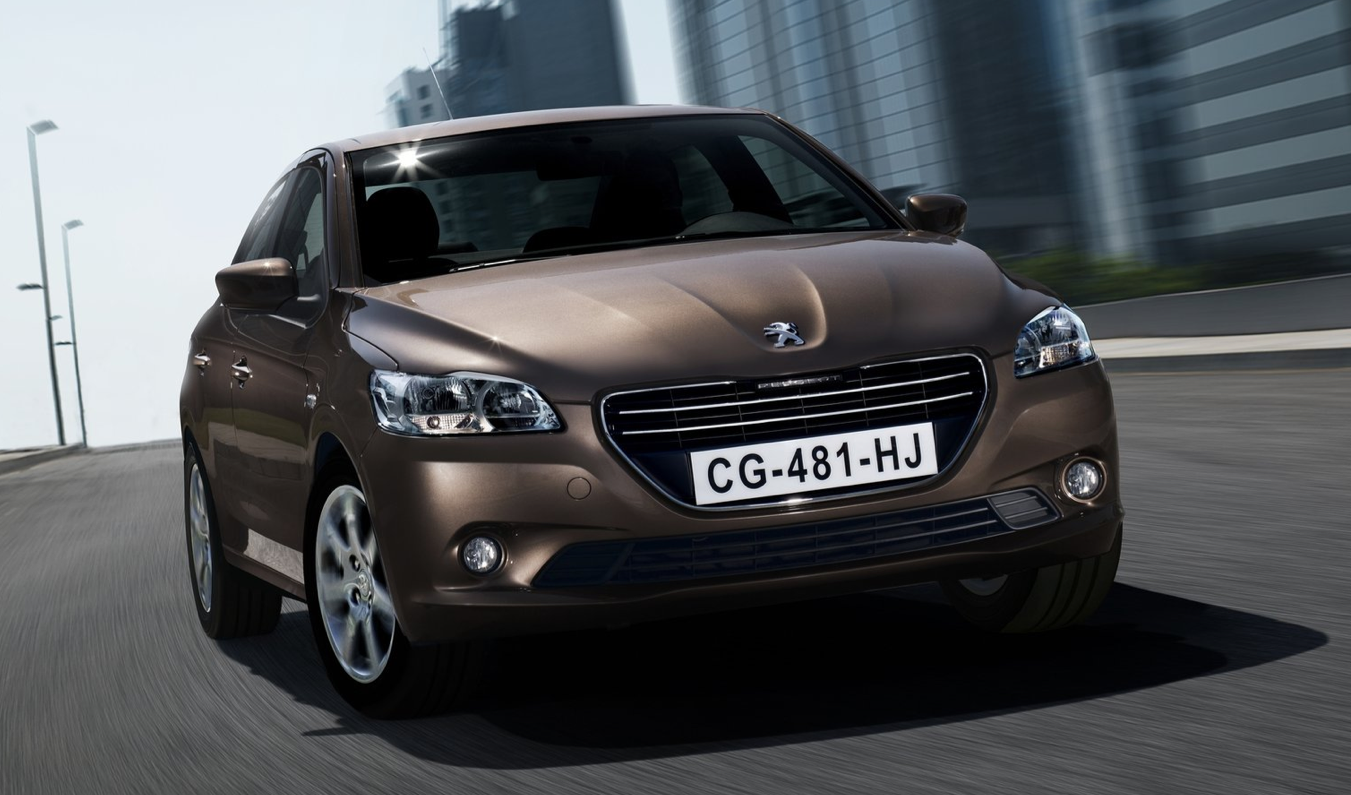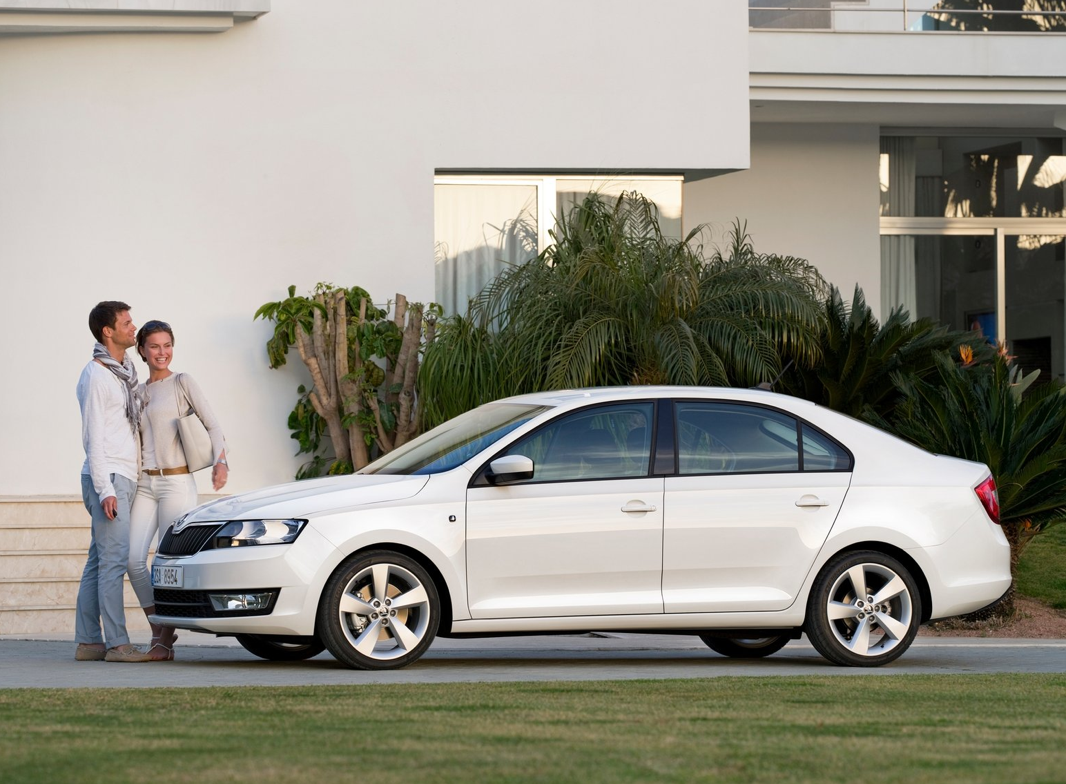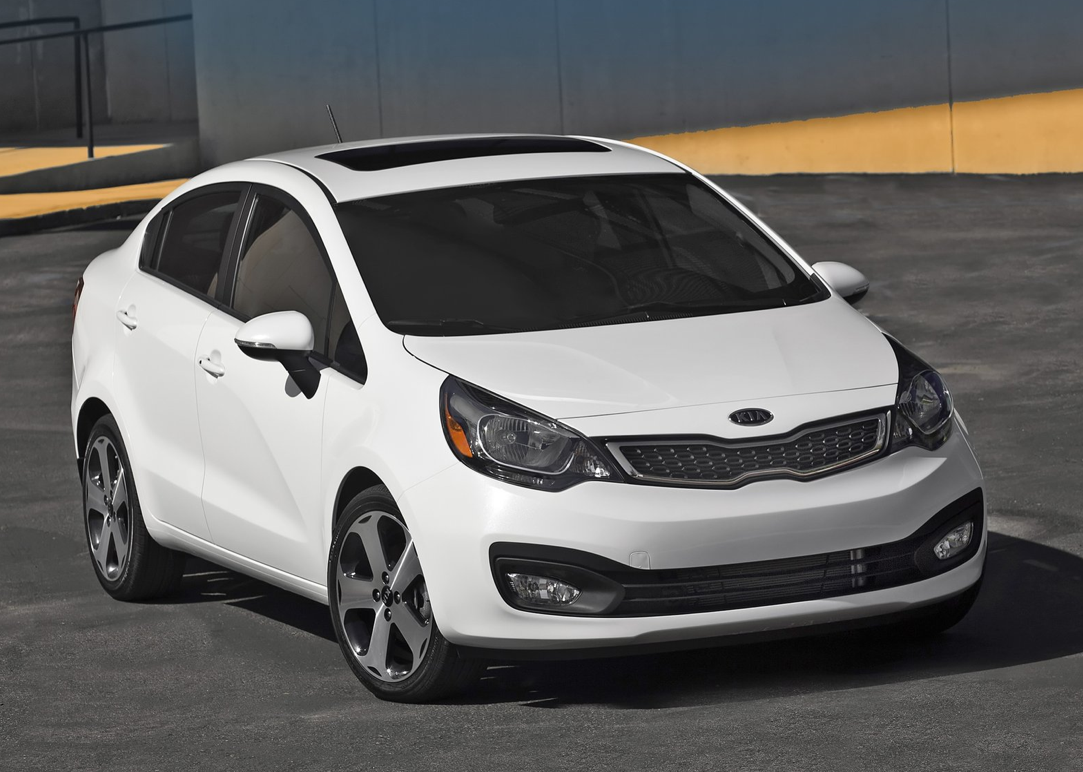Who is the average European small sedan buyer? What does he want from a car? How much is he willing to spend? Is styling really relevant or is content more important? – these are just some of the questions every carmaker selling automobiles in Europe has to answer before putting a new 3-box car on sale.
Small sedans used to be very popular a couple of decades ago, but hatchbacks have proven themselves more practical in congested cities while crossovers have cut another significant chunk of the market. So, this has left the compact sedan the tricky job of juggling content and affordability in order to attract customers.
Only a few carmakers are still offering these back-to-basics affordable sedan models, and by affordable we mean really cheap. There's the Chevrolet Aveo Sedan, a car made by GM Korea, the equally Korea Kia Rio Sedan, two French sedans called the Peugeot 301 and Citroen C-Elysee and two Czech-built twins, the Skoda Rapid and SEAT Toledo, identical beyond the badges and trim levels. The list of affordable sedans should also include the Dacia Logan, which doesn't appeal to more pretentious customers, and the Fiat Linea, which is kind of old and we'd rather avoid. Hyundai should also have a new Accent ready next year, but the current model isn't as good as Rio, so it's not worth taking into account. With a starting price of about €15,000, the Renault Fluence is good, but not really affordable.
First thing you'll need to know is that while all sedans are equal, some are more equal than others. All these cars have seating for five but some are more practical than others. the SEAT Toledo and Skoda Rapid for example are fitted with a liftback boots, so they boast 550 liters of cargo capacity. An Aveo has 500 liters, and so do the French PSA twins. The Rio is rated at just 390 liters on the other hand. The Logan is the surprise of its class with 510 liters, despite being the cheapest.
Another important aspect to buying an affordable small sedan is the engine and gearbox. While small petrol engines sound ideal on paper, offering low emissions and fuel consumption, the reality is most 1.2-liter engines you'll be tempted by are to be avoided, since they never match claimed numbers, are unpleasant to drive in and awful highway companions. For about €900 extra, both the Toledo and Rapid offer the 1.2 TSI 86, which is a turbocharged 4-cylinder and a much better bet than the basic 1.2 MPI. Despite having more power, the turbo usit is 1 l/100km more efficient.
If you're looking to buy the Kia Rio, your best bet is again the 1.4-liter GSL, not the basic 1.2-liter. Unfortunately, Kia doesn't offer the excellent 90 PS 1.4-liter diesel from the Rio hatch on the sedan. PSA in their infinite wisdom also offer either a 1.2 with an inadequate 110 Nm of torque, a big 1.6-liter or a diesel model which is €3,000 more expensive the 1.2. Your best best would be to get a good deal on the car model you'd like to own. As for the Dacia Logan, the 0.9-liter will get semi-decent economy, but only if you can drive it below 2,000rpm all the time.
Whichever model you chose, start&stop is very nice to have because it should save you about 0.5 liters per 100 km in city driving, if not more. Remember, you'll have to pay interest on a bigger loan for a diesel engined car, but there's no interest on the fuel used every month, so buy the cheaper car.
Perhaps more important than what happen you spend at the pump is what happens when your car breaks down The standard warranty is: 4 years for the Skoda Rapid, 3 years on the Dacia Logan, 5 years for the Chevrolet Aveo Sedan, 2 years for the Citroen C-Elysee and Peugeot 301 and 7 years for the Kia Rio (read the fine print though). A good relationship with your dealer can't hurt at all. I've heard of Renault warranties being voided because of a seat latch and I've heard of Kia dealers changing the whole front suspension under warranty due to "premature deterioration".
Perhaps the most important factor in your buying decision is the price, which is also the trickiest element. Every market in Europe is somewhat different. The UK, for example, doesn't have some of these car models we've been mentioning earlier since hatchbacks are more popular. In Germany, meanwhile, trim levels are more generous, while in France the locally made models are cheaper.
Take note, in the subcompact car segment, cheap cars almost never have air conditioning in the basic configuration. The Skoda Rapid and its SEAT sister model is the exception here, but their base price reflects this. Also, the better engines are usually also reserved for mid-grade models, which is the sweet-spot in the range. You should also check if front electric windows and mirrors are standard because they might not be and you really need them.
Stay well away from gimmicks like faux leather seats (they are awful in the summer), complicated infotainment systems with navigation (they age quickly) and large diameter alloy wheels which ruin the ride.
Parking sensors are good to have but it's worth testing if they work well on your particular car. We have tested some cars which wouldn't detect hazards at all and others that would go crazy over a tiny sidewalk that wouldn't hurt anybody. Simply put, every feature you plan on having on your car needs to work well. It's also worth looking into the soundproofing of the car. I believe Kia has optional proofing for the hood which is really cheap to buy, and you should also look out for the door rubbers.
With that being said, we wish you luck in battle with your dealer. Remember to take advantage of the best sales offers, haggle for a discount and maybe get winter tires or a full tank of gas out of the deal.
Only a few carmakers are still offering these back-to-basics affordable sedan models, and by affordable we mean really cheap. There's the Chevrolet Aveo Sedan, a car made by GM Korea, the equally Korea Kia Rio Sedan, two French sedans called the Peugeot 301 and Citroen C-Elysee and two Czech-built twins, the Skoda Rapid and SEAT Toledo, identical beyond the badges and trim levels. The list of affordable sedans should also include the Dacia Logan, which doesn't appeal to more pretentious customers, and the Fiat Linea, which is kind of old and we'd rather avoid. Hyundai should also have a new Accent ready next year, but the current model isn't as good as Rio, so it's not worth taking into account. With a starting price of about €15,000, the Renault Fluence is good, but not really affordable.
First thing you'll need to know is that while all sedans are equal, some are more equal than others. All these cars have seating for five but some are more practical than others. the SEAT Toledo and Skoda Rapid for example are fitted with a liftback boots, so they boast 550 liters of cargo capacity. An Aveo has 500 liters, and so do the French PSA twins. The Rio is rated at just 390 liters on the other hand. The Logan is the surprise of its class with 510 liters, despite being the cheapest.
Another important aspect to buying an affordable small sedan is the engine and gearbox. While small petrol engines sound ideal on paper, offering low emissions and fuel consumption, the reality is most 1.2-liter engines you'll be tempted by are to be avoided, since they never match claimed numbers, are unpleasant to drive in and awful highway companions. For about €900 extra, both the Toledo and Rapid offer the 1.2 TSI 86, which is a turbocharged 4-cylinder and a much better bet than the basic 1.2 MPI. Despite having more power, the turbo usit is 1 l/100km more efficient.
If you're looking to buy the Kia Rio, your best bet is again the 1.4-liter GSL, not the basic 1.2-liter. Unfortunately, Kia doesn't offer the excellent 90 PS 1.4-liter diesel from the Rio hatch on the sedan. PSA in their infinite wisdom also offer either a 1.2 with an inadequate 110 Nm of torque, a big 1.6-liter or a diesel model which is €3,000 more expensive the 1.2. Your best best would be to get a good deal on the car model you'd like to own. As for the Dacia Logan, the 0.9-liter will get semi-decent economy, but only if you can drive it below 2,000rpm all the time.
Whichever model you chose, start&stop is very nice to have because it should save you about 0.5 liters per 100 km in city driving, if not more. Remember, you'll have to pay interest on a bigger loan for a diesel engined car, but there's no interest on the fuel used every month, so buy the cheaper car.
Perhaps more important than what happen you spend at the pump is what happens when your car breaks down The standard warranty is: 4 years for the Skoda Rapid, 3 years on the Dacia Logan, 5 years for the Chevrolet Aveo Sedan, 2 years for the Citroen C-Elysee and Peugeot 301 and 7 years for the Kia Rio (read the fine print though). A good relationship with your dealer can't hurt at all. I've heard of Renault warranties being voided because of a seat latch and I've heard of Kia dealers changing the whole front suspension under warranty due to "premature deterioration".
Perhaps the most important factor in your buying decision is the price, which is also the trickiest element. Every market in Europe is somewhat different. The UK, for example, doesn't have some of these car models we've been mentioning earlier since hatchbacks are more popular. In Germany, meanwhile, trim levels are more generous, while in France the locally made models are cheaper.
Take note, in the subcompact car segment, cheap cars almost never have air conditioning in the basic configuration. The Skoda Rapid and its SEAT sister model is the exception here, but their base price reflects this. Also, the better engines are usually also reserved for mid-grade models, which is the sweet-spot in the range. You should also check if front electric windows and mirrors are standard because they might not be and you really need them.
Stay well away from gimmicks like faux leather seats (they are awful in the summer), complicated infotainment systems with navigation (they age quickly) and large diameter alloy wheels which ruin the ride.
Parking sensors are good to have but it's worth testing if they work well on your particular car. We have tested some cars which wouldn't detect hazards at all and others that would go crazy over a tiny sidewalk that wouldn't hurt anybody. Simply put, every feature you plan on having on your car needs to work well. It's also worth looking into the soundproofing of the car. I believe Kia has optional proofing for the hood which is really cheap to buy, and you should also look out for the door rubbers.
With that being said, we wish you luck in battle with your dealer. Remember to take advantage of the best sales offers, haggle for a discount and maybe get winter tires or a full tank of gas out of the deal.








